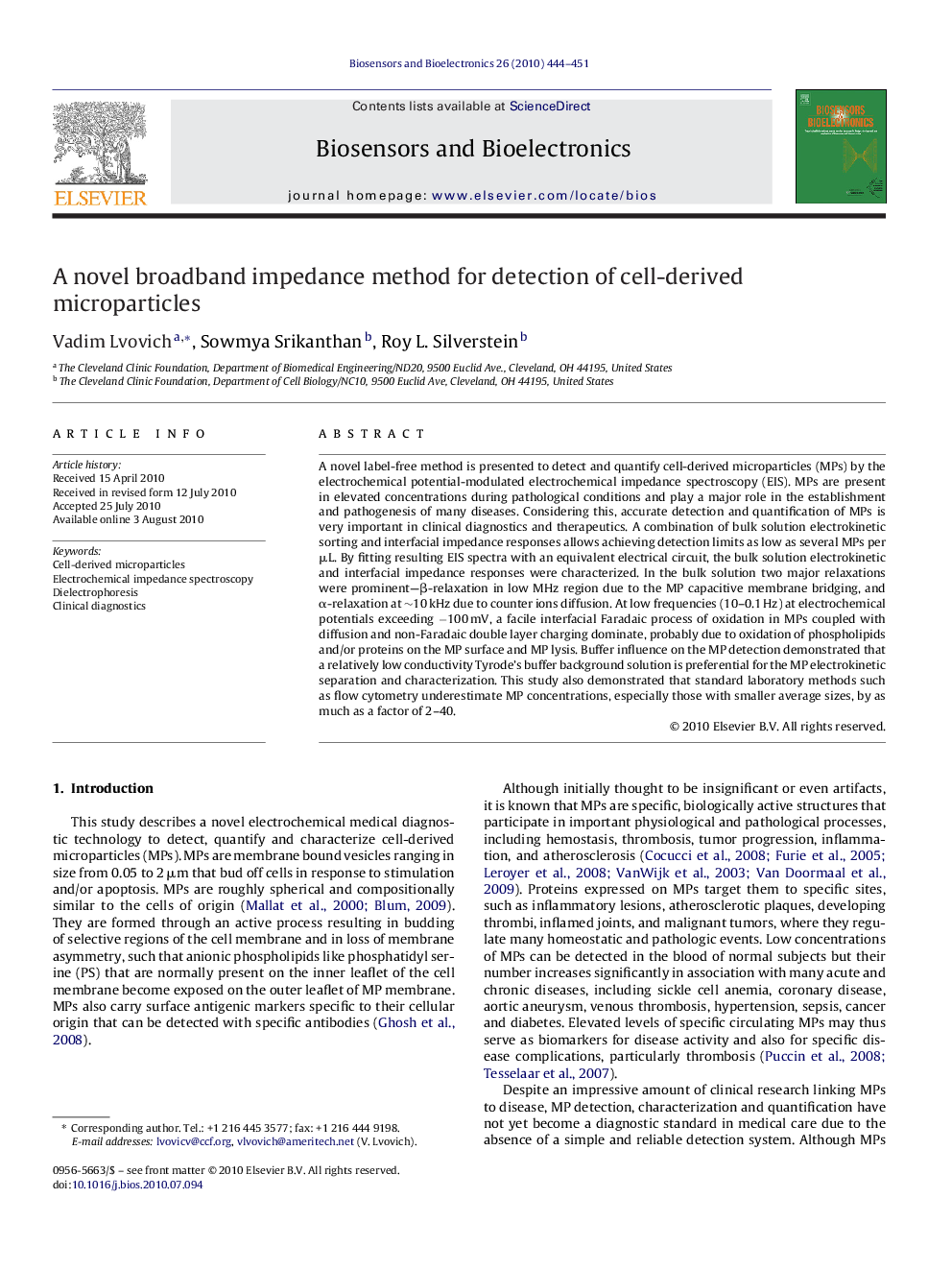| Article ID | Journal | Published Year | Pages | File Type |
|---|---|---|---|---|
| 868554 | Biosensors and Bioelectronics | 2010 | 8 Pages |
A novel label-free method is presented to detect and quantify cell-derived microparticles (MPs) by the electrochemical potential-modulated electrochemical impedance spectroscopy (EIS). MPs are present in elevated concentrations during pathological conditions and play a major role in the establishment and pathogenesis of many diseases. Considering this, accurate detection and quantification of MPs is very important in clinical diagnostics and therapeutics. A combination of bulk solution electrokinetic sorting and interfacial impedance responses allows achieving detection limits as low as several MPs per μL. By fitting resulting EIS spectra with an equivalent electrical circuit, the bulk solution electrokinetic and interfacial impedance responses were characterized. In the bulk solution two major relaxations were prominent—β-relaxation in low MHz region due to the MP capacitive membrane bridging, and α-relaxation at ∼10 kHz due to counter ions diffusion. At low frequencies (10–0.1 Hz) at electrochemical potentials exceeding −100 mV, a facile interfacial Faradaic process of oxidation in MPs coupled with diffusion and non-Faradaic double layer charging dominate, probably due to oxidation of phospholipids and/or proteins on the MP surface and MP lysis. Buffer influence on the MP detection demonstrated that a relatively low conductivity Tyrode's buffer background solution is preferential for the MP electrokinetic separation and characterization. This study also demonstrated that standard laboratory methods such as flow cytometry underestimate MP concentrations, especially those with smaller average sizes, by as much as a factor of 2–40.
